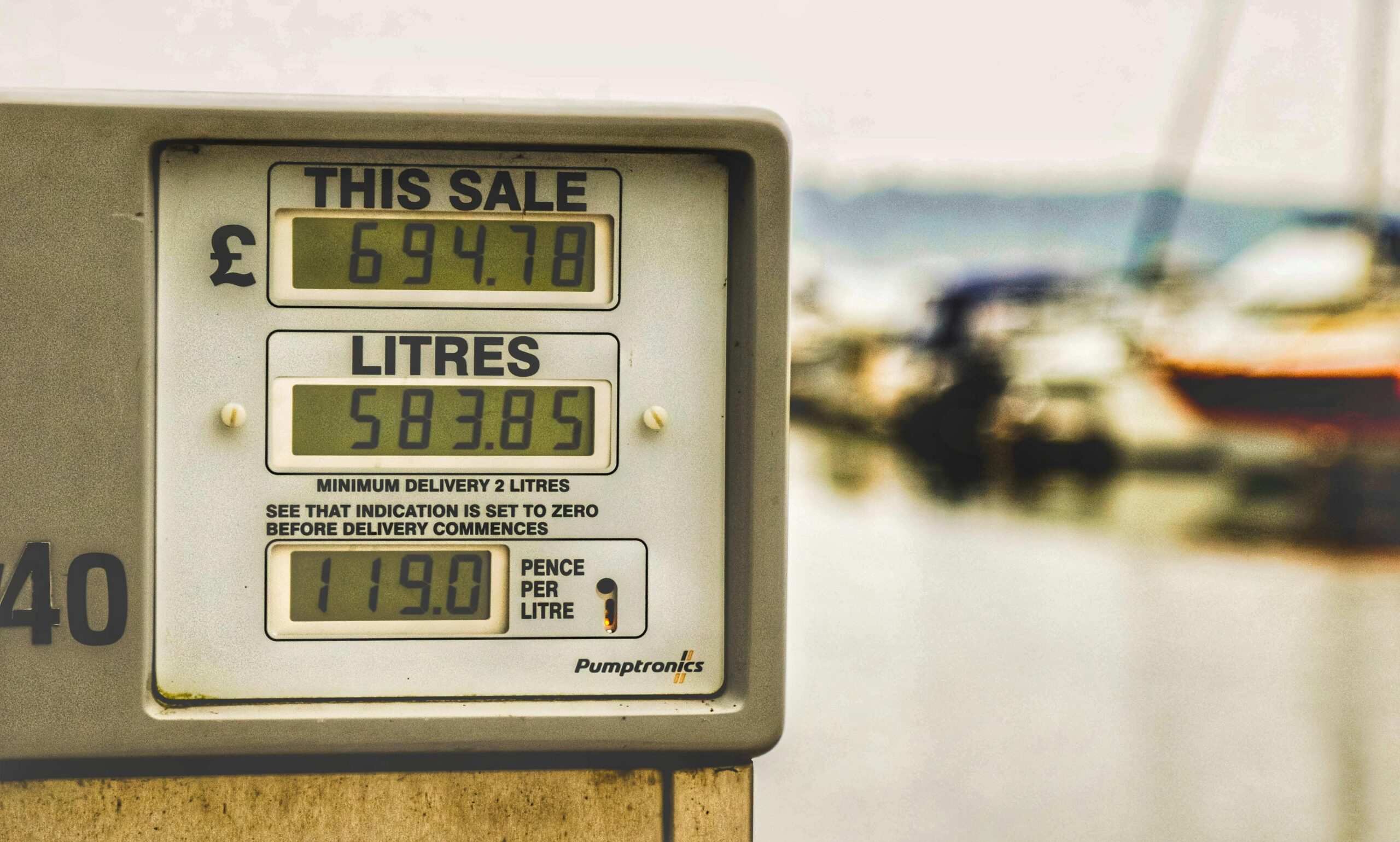Are you ready to uncover the shocking insights about the expected petrol price in Pakistan that everyone is talking about? The fuel prices in Pakistan have always been a hot topic, but what’s coming next might just blow your mind! In this article, we dive deep into the latest predictions on petrol price hikes in Pakistan 2024, exploring the factors driving these changes and what they mean for your daily expenses. If you’ve been wondering, “What will be the petrol price in Pakistan next month?” or “How will rising fuel costs impact Pakistan’s economy?” then keep reading because you don’t wanna miss these crucial updates!
The expected petrol price in Pakistan is influenced by multiple factors like global crude oil rates, government policies, and currency exchange fluctuations. With the world oil prices experiencing unprecedented volatility, it’s no surprise that Pakistan’s fuel prices are also on a rollercoaster ride. Experts predict that the petrol price hike in Pakistan 2024 could reach new highs, affecting not only transportation costs but also everyday commodities. This surge raises an urgent question: How can consumers prepare for the upcoming petrol price changes in Pakistan?
Moreover, the government’s decision on petroleum pricing policies will play a critical role in determining the final retail price. Will subsidies continue, or is Pakistan heading toward a liberalized fuel pricing system? As the nation braces for these changes, it’s essential to stay informed with the most recent and reliable data on petrol price trends in Pakistan. So, buckle up and get ready to explore the eye-opening facts and forecasts about Pakistan’s petrol prices that can impact your budget and lifestyle dramatically!
What Will Be the Expected Petrol Price in Pakistan by End of 2024? Expert Predictions Revealed
The petrol price in Pakistan always been a hot topic, specially when people try to forecast what will happen next year. With 2024 nearly half gone, many wondering what will be the expected petrol price in Pakistan by end of 2024? Experts have given various predictions, some shocking, others more grounded, but one thing is sure: the petrol price affects every Pakistani deeply. From daily commute cost to inflation in goods, the fluctuations cause ripple effects across the economy.
Historical Petrol Price Trends in Pakistan
To understand where prices might go, we need to look at the past. Petrol prices in Pakistan has seen considerable ups and downs over the last decade. Here’s a quick glance:
- 2014: Around PKR 95 per litre
- 2016: Dropped to nearly PKR 65 per litre due to global oil price fall
- 2018: Increased again to approximately PKR 95 per litre
- 2020: Dropped sharply during global lockdowns to about PKR 60 per litre
- 2023: Climbed up to PKR 265 per litre due to various factors
These fluctuations are often linked with global crude oil prices, currency exchange rates, and government policies regarding taxes and subsidies.
Why Petrol Prices Keep Changing?
Pakistan is a net importer of petroleum products, which means the local prices largely depend on international crude oil prices. But it’s not only that. Factors such as:
- Exchange rate of Pakistani Rupee (PKR) against US Dollar
- Government’s regulatory duties and taxes on petroleum
- Global geopolitical tensions affecting oil supply
- Domestic demand and supply dynamics
- Inflation and cost of refining and distribution
All these combined influence the final price we pay at the pump.
Expert Predictions for Petrol Price by End of 2024
What will be the expected petrol price in Pakistan by end of 2024? Experts have different views but generally agree it will likely rise compared to current rates. Some key predictions include:
- Petroleum Analysts Group: They suggest the price could hit around PKR 300 per litre if global crude oil prices remain high and rupee continues to weaken.
- Economic Research Institutes: Predict a more moderate increase to about PKR 280 per litre if the government manages subsidies and keeps exchange rates stable.
- Industry Insiders: Warn that unexpected geopolitical events or supply disruptions can cause sudden spikes, pushing prices even beyond PKR 320 per litre.
- Government Officials: Often try to keep expectations low but acknowledge that international trends make it hard to maintain current prices.
Comparison of Petrol Prices: Pakistan vs Neighboring Countries (2024 Estimates)
| Country | Estimated Petrol Price (PKR per litre) |
|---|---|
| Pakistan | 280 – 320 |
| India | 150 – 170 |
| Iran | 40 – 50 |
| Afghanistan | 200 – 220 |
As seen, Pakistan’s petrol price is significantly higher than many neighbors, mainly due to taxes, import dependency, and exchange rate issues.
How Will Rising Petrol Prices Impact Pakistan?
The expected petrol price increase will not only hit consumers’ wallets but also have broader consequences such as:
- Increased transportation costs leading to higher prices of goods
- Inflationary pressures on food, medicine, and other essentials
- Strain on low- and middle-income families who spend larger portion of income on fuel
- Businesses facing higher operating costs, which may reduce profitability or increase product prices
- Pressure on government to either subsidize or face public discontent
Practical Tips For Consumers Facing Petrol Price Hikes
With petrol prices expected to rise, here are some practical advice for people to cope:
- Use public transport more whenever possible
- Carpooling can reduce individual fuel expenses
- Maintain vehicles properly to improve fuel efficiency
- Consider fuel-efficient or electric vehicles where feasible
- Plan trips to minimize unnecessary travel
What Government Can Do To Stabilize Petrol Prices?
Experts also discuss policy measures that Pakistan’s government might take to reduce petrol price shocks:
- Reduce taxes and duties on petroleum products temporarily
- Negotiate long-term oil supply contracts at better rates
- Promote alternative energy sources to reduce dependency on imported oil
- Strengthen the PKR against USD through economic reforms
- Improve petroleum product distribution to avoid supply bottlenecks
Table: Factors Affecting Petrol Prices in Pakistan
| Factor | Impact on Petrol Price |
|---|---|
| Global Crude Oil Price | Direct correlation, higher crude → higher petrol price |
| PKR/USD Exchange Rate | Weaker PKR means costlier imports |
| Government Taxes & Duties | Increase raises retail prices |
| Geopolitical Events | Supply disruptions cause price spikes |
| Domestic Demand | Higher demand can push prices up |
| Subsidies | Can temporarily reduce consumer price |
Experts warn that without effective control on these
Top 5 Shocking Factors Driving the Surge in Pakistan’s Petrol Prices You Need to Know
The recent surge in petrol prices in Pakistan has caught many by surprise, leaving motorists and businesses worried about the future. Petrol prices have been climbing rapidly, and people want to know why this is happening and what to expect next. The situation is complex, driven by many factors intertwined both globally and locally. If you are wondering about the top reasons behind this shocking increase and the expected petrol price in Pakistan, keep reading because this article will unpack all you need to know.
Top 5 Shocking Factors Driving the Surge in Pakistan’s Petrol Prices You Need to Know
-
Global Crude Oil Price Fluctuations
One of the biggest reasons for Pakistan’s petrol price hike is the volatile global crude oil market. Crude oil prices keeps changing due to geopolitical tensions, production cuts by OPEC countries, and demand-supply imbalances. For example, when OPEC decides to cut down production, global oil prices increase, and Pakistan, being an oil importer, has to pay more. This cost is then passed to consumers. In recent years, prices have been more unpredictable than ever, which adds to the instability of local petrol prices. -
Currency Devaluation Against the US Dollar
Pakistan’s currency depreciation against the US dollar also plays a major role. Since oil imports are paid in dollars, when Pakistani Rupee weakens, it costs more rupees to buy the same amount of oil. This directly affects petrol prices in the country. For instance, if the exchange rate moves from 160 PKR per USD to 180 PKR per USD, the import bill increases significantly, which forces the government to raise petrol prices to cover the costs. This factor often goes unnoticed but it’s a silent driver behind price surges. -
Increased Taxes and Levies on Petroleum Products
The government imposes various taxes and levies on petroleum products. These includes general sales tax (GST), petroleum development levy (PDL), and other duties. Sometimes, to boost revenue, the government increases these rates. This means petrol becomes more expensive for consumers despite no change in international oil prices. For example, in the last budget, PDL was increased which added a considerable amount to the final petrol price. Such fiscal measures often shock the public because they directly inflate the fuel cost. -
Supply Chain Disruptions and Logistics Costs
Pakistan’s fuel supply chain faces many challenges such as infrastructure bottlenecks, transportation inefficiencies, and political unrest in some regions. These problems cause delays and increase the cost of distributing petrol across the country. When transportation costs rise, petrol stations pay more and pass that cost to customers. If roads are damaged or if there are security issues along supply routes, fuel prices can spike even if crude oil prices remain stable globally. -
Rising Demand Due to Economic Activities
Economic growth and increased industrial activities also put pressure on petrol demand. As more vehicles hit the roads and factories operate more, the consumption of petrol increases. When demand outpaces supply, prices naturally go up. Pakistan’s growing population and urbanization means more people rely on petrol-powered transportation, which stresses the market. This demand-side pressure is often underestimated when discussing price hikes but is very important for understanding the bigger picture.
Expected Petrol Price in Pakistan: Shocking Insights You Must Know
The question on everyone’s mind is obviously: what will be the expected petrol price in Pakistan? Experts and analysts have been trying to predict this but the market remains unpredictable. However, based on current trends and factors, some insights have emerged.
-
Price Range Estimates for Next 6 Months
Analysts forecast petrol prices could increase between 10-20% in the next half-year. This means if the price is currently around 280 PKR per liter, it might rise to somewhere between 308 to 336 PKR per liter depending on how the global oil market and currency situation evolves. -
Possible Government Interventions
The government might try to control prices by reducing taxes or by subsidizing petrol imports temporarily. But such measures can only work short-term and might increase fiscal deficits. Subsidies also depend on government’s financial health, which currently is under strain. -
Impact of International Developments
Global events like conflicts in oil-producing regions, changes in US energy policies, or new sanctions can quickly alter prices. For example, if a major oil-producing country faces sanctions, crude prices could jump, pushing Pakistan’s petrol price upwards immediately. -
Seasonal Price Variations
Petrol prices often rise during peak travel seasons, such as holidays or agricultural cycles, when demand increases. This seasonal effect adds another layer of unpredictability to prices.
Comparison of Petrol Prices Over the Past Decade in Pakistan
Here’s a quick glance at how petrol prices have moved over the last 10 years, showing the general trend and some of the shocks:
Year | Avg Petrol Price (PKR/Liter)
How Global Oil Market Trends Impact the Expected Petrol Price in Pakistan: A Deep Dive
How Global Oil Market Trends Impact the Expected Petrol Price in Pakistan: A Deep Dive
The petrol price in Pakistan always been a topic of great concern among citizens and businesses alike. With the country heavily dependent on imported oil, any fluctuation in the global oil market instantly sends ripples through the local economy. Understanding how global oil market trends influence the expected petrol price in Pakistan is essential for anyone trying to make sense of the current fuel price situation. In this article, we will take a deep dive into the factors shaping the petrol price in Pakistan, reveal some shocking insights, and discuss what consumers might expect in coming months.
Why Global Oil Prices Matter So Much for Pakistan
Pakistan imports around 80% of its oil requirements, making it highly vulnerable to international oil price swings. When crude oil prices rise globally, Pakistan’s import bill increases, putting pressure on the government to raise petrol prices domestically. Likewise, when oil prices drop due to oversupply or reduced demand, the petrol prices may get relief in Pakistan. However, the relationship is not always straightforward because of taxes, subsidies, currency fluctuations, and government policies.
Historically, Pakistan’s petrol prices have closely followed the trends in the international oil market, especially the Brent crude price, which is a global benchmark. For example:
- In 2014, when Brent crude fell from over $110 to below $50 per barrel, Pakistan’s petrol prices decreased significantly.
- Conversely, during 2021 when global oil prices surged past $70 per barrel due to post-pandemic demand recovery, petrol prices in Pakistan also saw notable increases.
Key Global Oil Market Trends Affecting Petrol Prices in Pakistan
Several global factors have a direct or indirect influence on how much Pakistanis pay at the petrol pump. These include:
-
OPEC+ Production Decisions
The Organization of Petroleum Exporting Countries (OPEC) and its allies (OPEC+) control a significant portion of the world’s oil supply. When they decide to cut production, oil prices usually rise. If they increase output, prices tend to fall. Pakistan feels these changes quickly because it buys most of its oil from OPEC countries. -
Geopolitical Tensions
Conflicts in the Middle East or sanctions on oil-producing countries like Iran and Venezuela can disrupt supply chains. Such disruptions cause price spikes globally, which then reflect in Pakistan’s petrol prices. -
Global Demand and Economic Conditions
Economic slowdowns or booms around the world affect oil demand. For example, during the COVID-19 pandemic, demand plunged, causing oil prices to crash temporarily. As economies recover, demand increases, pushing prices higher. -
Currency Exchange Rates
Since oil is priced in US dollars, fluctuations in the Pakistani Rupee (PKR) against the dollar impact the local fuel prices. A weaker rupee means higher costs for oil imports even if global prices stay steady.
Expected Petrol Price in Pakistan: Shocking Insights You Must Know
Looking ahead, predicting exact petrol prices is tricky, but some surprising insights can help us understand what to expect:
-
Price Volatility Will Continue
Due to unstable global oil markets and unpredictable geopolitical events, petrol prices in Pakistan will likely remain volatile. Sudden price jumps or drops can happen anytime. -
Government Policies Influence Final Price
The government may impose taxes or subsidies that significantly change what consumers pay. Sometimes, even if global oil prices rise, the government tries to cushion the impact through subsidies, but this is not always sustainable. -
Renewable Energy Trends
Although Pakistan’s shift to renewable energy is slow, global trends towards cleaner energy may gradually reduce dependence on oil. However, this transition will take years, so petrol prices will remain linked to oil markets in the near future.
How Does Pakistan’s Petrol Price Compare Globally?
Here is a quick comparison of petrol prices (approximate) in selected countries, reflecting different economic and policy environments:
| Country | Petrol Price per Liter (USD) |
|---|---|
| Pakistan | 1.10 – 1.30 |
| India | 1.20 – 1.50 |
| United States | 0.70 – 0.90 |
| Saudi Arabia | 0.25 – 0.35 |
| European Union | 1.60 – 2.00 |
As seen, Pakistan’s petrol price is higher than oil-rich Saudi Arabia but lower than many European countries. This balance reflects both the import dependency and government taxation policies.
Practical Examples of Oil Market Impact on Pakistan’s Petrol Prices
- Example 1: 2022 Oil Price Surge
When oil prices surged over $120 per barrel in early 2022 due to the Russia-Ukraine conflict, Pakistan’s petrol prices crossed Rs. 150 per liter in many cities. The government faced criticism for delays in adjusting prices, which impacted inflation and
Monthly Breakdown: Expected Petrol Price Fluctuations in Pakistan for 2024 and Beyond
Petrol prices in Pakistan have always been a topic that captures the attention of every citizen, from daily commuters to business owners. The year 2024 brings more uncertainties and speculations about the expected petrol price in Pakistan, with many wondering how the fluctuations will affect their monthly budgets and the overall economy. If you think petrol prices only change randomly, there are actually patterns and factors that influence these movements, and knowing them can help you prepare better for the months ahead.
Monthly Breakdown: Expected Petrol Price Fluctuations in Pakistan for 2024 and Beyond
The petrol price in Pakistan is influenced by various things such as international crude oil prices, government taxes, exchange rates, and local demand-supply dynamics. Historically, the government reviews and adjusts petrol prices on a monthly basis, often leading to price hikes or reductions depending on global market conditions. Here is a rough monthly expectation of petrol price trends in 2024:
- January to March: Typically, the start of the year sees moderate stability because of global oil production agreements and reduced demand after winter. However, any geopolitical tensions can cause sudden price spikes.
- April to June: These months usually witness rising prices, as summer approaches and demand for fuel increases, especially due to travel and agricultural activities.
- July to September: The monsoon season sometimes impacts oil imports and refinery operations, leading to sporadic increases or maintenance-related price dips.
- October to December: Towards the end of the year, prices may stabilize or fall slightly if OPEC decides to increase oil supply to meet global demand.
Of course, this is not set in stone, and sudden international crises or changes in exchange rates can cause unexpected fluctuations.
Expected Petrol Price In Pakistan: Shocking Insights You Must Know
Many people expect petrol prices to always go upward, but sometimes prices drop, which surprises many. In 2023, Pakistan faced several ups and downs in petrol cost, with prices sometimes changing weekly due to volatile oil markets and political decisions. Here are some shocking insights about petrol pricing in Pakistan that you might not be aware of:
- The government of Pakistan often imposes different taxes on petrol, which can make up to 30-40% of the retail price.
- International crude oil prices are denominated in US dollars, so when Pakistani Rupee weakens against the dollar, petrol becomes more expensive locally.
- Subsidies on petrol are rare, so consumers bear the full brunt of international price changes.
- Sometimes, petrol prices fluctuate not because of supply issues but due to political pressures or budgetary needs of the government.
This mix of economic and political factors means petrol price forecasting is very difficult, and the public must stay informed about both international and domestic developments.
Factors Influencing Petrol Prices in Pakistan
Understanding why petrol prices go up or down require looking at multiple influencing factors. Here is a list of some critical elements affecting petrol price in Pakistan:
• Crude Oil Prices: Pakistan imports almost all of its crude oil. When global crude oil prices go up, local petrol prices follow. For example, the Brent crude oil was around $70 per barrel in mid-2023 but rose to near $90 due to geopolitical tensions.
• Currency Exchange Rates: Since oil is bought in dollars, a depreciation in the Pakistani Rupee causes petrol prices to rise even if crude oil prices remain stable.
• Taxes and Duties: Federal excise duty, sales tax, and petroleum development levy contribute a big chunk of petrol price.
• Government Policies: Sometimes, the government decides to keep petrol prices stable or allow gradual increases to control inflation or protect consumers.
• Supply and Demand: Seasonal demand changes, refinery maintenance, or logistical issues can affect petrol availability and prices.
• International Political Events: Conflicts in oil-producing regions may disrupt supply chains and escalate prices.
Price Comparison: Pakistan vs Regional Countries (Approximate Petrol Price in early 2024)
| Country | Petrol Price (per liter in PKR equivalent) |
|---|---|
| Pakistan | 300 to 310 PKR |
| India | 150 to 160 PKR |
| Iran | 40 to 50 PKR (subsidized) |
| Afghanistan | 220 to 230 PKR |
| Bangladesh | 180 to 190 PKR |
The table shows Pakistan’s petrol price is significantly higher than some neighboring countries, mainly because of taxation and import dependency.
Practical Examples: How Petrol Price Changes Affect Daily Life in Pakistan
Imagine a daily commuter in Karachi whose vehicle consumes 10 liters of petrol daily. If petrol price rises by 10 PKR per liter, his daily fuel cost increases by 100 PKR, which sums up to 3000 PKR monthly. For a family living on a tight budget, this is a substantial amount that reduces spending on other essentials.
Similarly, businesses relying on transportation, such as logistics companies or food delivery services, must adjust
Is Pakistan Facing a Petrol Price Crisis? Shocking Insights and Government Measures Explained
Is Pakistan Facing a Petrol Price Crisis? Shocking Insights and Government Measures Explained
In recent months, Pakistan’s petrol prices have been on a rollercoaster ride, leaving many citizens worried about the economic impact on their daily lives. The question on everyone’s mind is: Is Pakistan facing a petrol price crisis? This article aims to unpack the current situation, providing shocking insights and explaining the government’s responses while also discussing the expected petrol price in Pakistan in the near future.
Why Petrol Prices Matter So Much in Pakistan
Petrol, or gasoline, is a critical commodity in Pakistan. It fuels transport, powers industries, and affects the prices of almost every goods and services. When petrol prices rise sharply, it causes ripple effects throughout the economy, especially hurting lower and middle-income families who rely heavily on public transport or private vehicles for their livelihood. Historically, Pakistan has seen fluctuating petrol prices, but the recent hikes have been unprecedented in both scale and frequency.
Factors Driving Petrol Prices in Pakistan
Several factors contribute to petrol price volatility in Pakistan.
- Global Crude Oil Prices: Pakistan imports most of its crude oil. So, any increase in international crude prices directly affects the local petrol price.
- Currency Depreciation: Since oil is imported in US dollars, a weak Pakistani Rupee means more local currency is needed to buy the same amount of oil.
- Taxes and Levies: The government imposes various taxes on petrol, including Petroleum Development Levy (PDL) and general sales tax, which add a significant burden.
- Supply and Demand Mismatch: Increased demand during peak seasons or disruptions in supply chains can cause prices to spike.
For example, last year, global crude oil prices surged due to geopolitical tensions and supply constraints. At the same time, the Pakistani Rupee depreciated sharply against the dollar, making petrol more expensive locally. This combination put immense pressure on the government to manage prices without hurting the budget.
Recent Petrol Price Trends in Pakistan
The last six months have seen petrol prices rise by more than 20%. Here is a brief outline of the price changes:
- January 2024: Rs. 240 per liter
- March 2024: Rs. 260 per liter
- May 2024: Rs. 290 per liter
Such rapid increases have caused public outcry and triggered debates on whether Pakistan is heading toward a petrol price crisis.
Government Measures to Control Petrol Prices
The Pakistani government has taken several steps trying to ease the burden on consumers, but the effectiveness remains debatable. Some of these measures include:
- Subsidies: The government has periodically introduced subsidies to lower the retail price of petrol. However, these subsidies strain the national budget.
- Tax Reduction: Temporary cuts in taxes like PDL have been announced to provide relief.
- Price Caps: Setting maximum allowable prices for petrol in the domestic market to avoid price gouging.
- Strategic Reserves: Building up strategic petroleum reserves to stabilize supply during global price shocks.
Despite these efforts, the prices have not stabilized fully, mainly because global factors remain out of government’s control. Additionally, budget constraints limit how much subsidy or tax relief can be provided without affecting other sectors.
Expected Petrol Price in Pakistan: What Experts Say
Looking forward, experts and analysts have shared some shocking insights about the expected petrol price in Pakistan. According to recent forecasts:
- The petrol price could reach Rs. 320 to Rs. 350 per liter by the end of 2024 if global crude prices stay high.
- Currency fluctuations will continue to play a major role. If the rupee weakens further, prices may increase even more.
- Inflationary pressures and rising fuel demand in Pakistan will add upward pressure on prices.
An economic analyst in Karachi said, “Unless there is a significant improvement in global oil supply or a major government intervention, petrol prices will remain high and possibly increase further.”
Comparisons With Neighboring Countries
To understand Pakistan’s petrol situation better, lets compare prices with neighboring countries:
| Country | Petrol Price per Liter (approx.) |
|---|---|
| Pakistan | Rs. 290 – 320 |
| India | Rs. 115 – 130 |
| Iran | Rs. 20 – 30 |
| Bangladesh | Rs. 150 – 170 |
As visible, Pakistan’s petrol price is relatively higher compared to some neighbors like India and Bangladesh. Iran, being an oil producer, has the lowest prices in the region. This comparison highlights how dependent Pakistan is on imports and the challenges it faces in controlling petrol costs.
Practical Examples of Petrol Price Impact
The everyday life of Pakistanis is strongly affected by petrol price hikes:
- Transportation Costs: Auto-rickshaw and taxi fares have increased, making commuting more expensive.
- Food Prices: Increased fuel costs raise transportation expenses for goods, leading to higher food prices in markets.
- Business Operations: Small businesses that rely
Conclusion
In conclusion, the expected petrol price in Pakistan is influenced by a combination of global oil market trends, currency fluctuations, government policies, and domestic demand-supply dynamics. Recent increases in international crude oil prices, coupled with the depreciation of the Pakistani rupee, suggest that petrol prices are likely to remain high or even rise further in the near term. Additionally, fiscal measures and taxation policies implemented by the government will play a crucial role in determining the final retail price consumers face. It is essential for consumers and businesses to stay informed about these developments and anticipate potential impacts on transportation and overall living costs. As petrol prices directly affect the economy and daily life, proactive steps such as adopting fuel-efficient practices and exploring alternative energy sources can help mitigate the financial burden. Staying updated with official announcements and market trends will empower individuals to make better decisions in this fluctuating environment.









